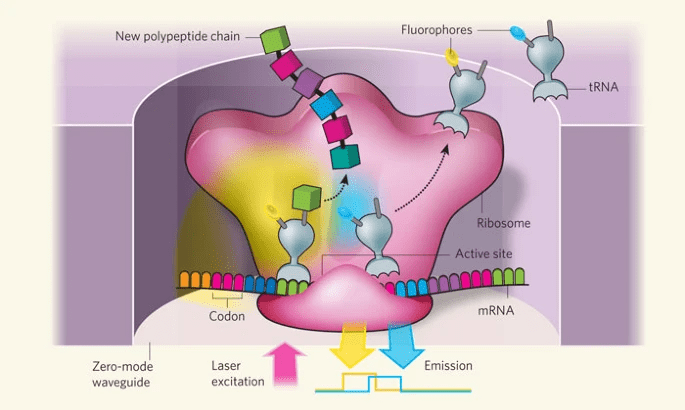This post was sparked by a question someone asked me about the new mRNA COVID-19 vaccines. Don’t take this all to the bank but I think it’s pretty accurate :).
Here’s the original question:
I’m trying to grok mRNA technology. My current perspectives:
- It’s “brand new” technology. Maybe 10 years old.
- It’s dramatic.
- mRNA is a set of instructions to the body to build cells.
- In the Pfizer and Moderna vaccines, mRNA instructions are snuck into the body inside a fat cell (lipid). The body follows those instructions and builds the Covid-19 spike. The immune system then realizes the spike is dangerous and builds antibodies to kill the spike and anything attached to the spike.
- Those mRNA instructions to build the spike are themselves alien, so they have to be snuck through the body’s immune system (firewall) else the mRNA would be destroyed by our immune system.
- It’s really cool and flexible technology. Lots of possible applications. It’s like first learning to write an app on a software system.
- It’s also scary as hell. We now have the power to tell the body to build whatever cells for which we can write instructions. Want 3 eyed people? Figure out the mRNA instructions for that third eye.
What do you think?

The fundamental paradigm of life on Earth is “DNA to RNA to proteins to life”.
There’s an interesting theory suggesting life was initially “solely” RNA-based – because RNA is capable of both storing information, like DNA, and acting as a catalyst for chemical reactions, like proteins – and then saw DNA “back evolve” to specialize in storing data while proteins evolved to handle the chemical activity schtick That’s because the double-stranded structure, which RNA does not share, is a better storage platform while proteins are far better at catalyzing reactions (I think because they’re more robust and capable of assuming more complex 3D structures).
That paradigm holds for almost every form of life on Earth, and if you’re willing to squint at viruses and declare them not really alive – because they can’t exhibit the signs of life without host organisms to breed in – then the paradigm really covers all life. The exceptions are RNA-based viruses (they’re not all DNA-based). They work by first forcing the infected cell to express a protein/enzyme called RNA reverse transcriptase which, as the name suggests, converts the virus’ RNA-encoded data into DNA-encoded data which then co-opts the host’s “DNA to RNA to protein” system to create more (RNA) viruses.
Back to the paradigm. DNA stores the blueprints. Specialized proteins (ultimately encoded in the same DNA and expressed as part of the system) read the DNA, producing messenger RNA (mRNA). The mRNA is sent from the nucleus to ribosomes in the cytoplasm. Ribosomes are protein complexes which read the mRNA codons. Three nucleotides form one codon, of both DNA and RNA (although they use somewhat different nucleotides in the triplets) and each codon codes for a specific amino acid.
The ribosome steps down the mRNA, and at each codon binds its target amino acid to the growing protein strand being produced by the ribosome (the binding process utilizes another form of RNA, called transfer RNA/tRNA, to shuttle the desired amino acid into the factory area). When the ribosome hits the end of the mRNA it releases the protein to do its thing (although it may undergo further processing elsewhere in the cell depending on its destiny).
Organisms segregate the various parts of this functionality both to keep the chemical reactions of each stage focused and as a form of security. Security starts at all of the organism’s external interfaces – digestion, breathing, skin, etc. – but it extends into the cells themselves, in the form of the cell membrane, which bars entry to all but certain specific complex things.
Small molecules, like water and oxygen, diffuse through passively but larger stuff, like mRNA, proteins, carbohydrates, etc., are only allowed entry via specialized ports. In fact, signaling proteins, like hormones, are not necessarily allowed entry at all. Instead, they bind to receptors on the membrane’s surface, causing the internal portion of the receptor to change its 3D shape, which then triggers catalytic activity inside the cell. So the “signal” gets through but the signaling protein does not. The goal is anything that’s “not self” gets destroyed (ideally, consumed, since life is efficient and always happy to eat its foes ????).
Consequently, and because they are chemically fragile, you generally can’t just consume or even inject complex stuff like proteins, RNA or DNA into an organism and have them survive to do anything. Figuring out how to protect mRNA so it could get inside cells was, in fact, a major advance during the last decade which let the concept of mRNA vaccines take off.
The power, and excitement, around having a useful mRNA technology depends critically on that discovery and our powerful, and still growing, ability to read DNA from any source. Creating vaccines the traditional way required growing them in some sacrificial host (e.g., chicken eggs), harvesting them, killing/neutralizing them, packaging them and then distributing/injecting them. mRNA replaces the “grow them in a sacrificial host” step with “produce them in chemical factories that do nothing except create mRNA”. It’s a much quicker and more efficient process, as was demonstrated spectacularly with the COVID-19 mRNA vaccines. It also benefits from the fact the human-built factory doesn’t have to be “convinced” to produce the mRNA, while living systems have to be (i.e., each virus will only grow naturally in certain types of cells, all cells actively resist, to varying degrees, virus production and they’re also engaged in other things, i.e., being alive ????).
But mRNAs are limited in scope – they each only code for one protein — and pretty fragile. I think I read somewhere that, even when they get to where they’re supposed to be inside cells they only last a short time. Which makes sense. Something has to eliminate/recycle mRNAs fairly quickly or the entire paradigm would break down because cells would be transcribing mRNAs from long ago. That would be prohibitively expensive energetically and would play hob with a cell’s ability to regulate its functioning – once triggered, everything would be stuck in the “on” position.
So growing a 3rd eye would be very difficult to do with mRNA. You’d have to find the DNA codes for both “growing an eye” and “do it here and now and not over there”. That’s a lot of genetic information, and a lot of “context”, to find/manage. A more interesting/risky idea would be to couple mRNA technology with RNA reverse transcriptase and use it to inject specific genes into the DNA of cells.
For example, sickle cell anemia is caused by a mutation in the genes encoding for hemoglobin which cause the hemoglobin protein to be slightly “off” and useless for carrying oxygen. It makes a hemoglobin protein of the wrong shape, and since a protein’s catalytic action generally depends heavily on its shape – the catalysis is “performed” by specialized 3D pockets and the locations of bound ions (iron, in the case of hemoglobin) which hold the reactants close enough to each other for the desired reaction to occur far more readily than it would if everything was floating around in a random soup. In fact, I think it’s a “point mutation”, a single wrong DNA nucleotide coding for a single wrong amino acid in a certain position within the hemoglobin molecule.
What if you created an mRNA for the correct form of hemoglobin, packaged it with an RNA reverse transcriptase, and injected it into a hemophiliac? If you could figure out how to target it solely/mostly to bone marrow cells it’s possible you’d be able to correct the mutation by giving the marrow cells a copy of the right gene. And the reverse transcriptase would ensure the injected data got converted into DNA and incorporated into the marrow cell’s DNA so it’d be a “permanent” fix (i.e., it’d affect all the cell’s daughter cells, as the cells reproduce over the patient’s life).
That’s a tall order…but it’s much more likely, IMHO, to be achievable than growing a third eye somewhere. And I believe I’ve read articles about how things like that are now under active investigation.
Of course, it’ll be tricky not only to implement but also to keep under control. Because what we’d be doing is creating an artificial RNA virus to do our bidding…and since “life grows”, the little bastard would be subject to evolutionary pressure to break free from our control and go its own way ????.















































2 thoughts on “A Quick Take on mRNA Vaccines”
Mark, I passed this on to my wife, who has a PhD in biochemistry. She said you did a beautiful job of explaining things.
Wow! Either the field hasn’t evolved much since the Dark Ages (aka the 1970s :)) or I’ve actually managed to stay at least somewhat up to date thanx to Nature and Science :).
Thanx very much for the kinds words!